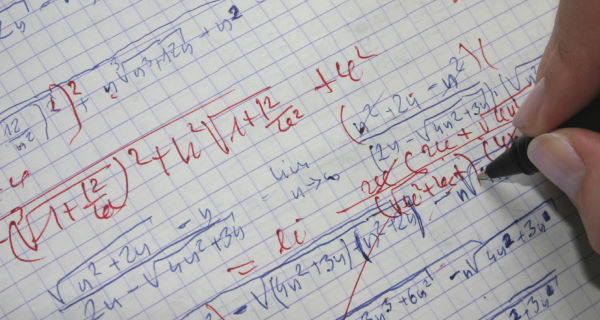Further increases in students taking Leaving Certificate science subjects and higher level maths have been offset by continued increases in numbers failing the exams writes Niall Murray.
Among the 55,708 students receiving their Leaving Certificate results at schools and other centres around the country this morning, 54,226 students sat maths exams. Of those, 15,198, or 28%, did the higher level exams.
The figure was up from 27% in 2014 and 2015, and from just 16% in 2011, before 25 bonus CAO points for passing honours maths were introduced by third-level colleges.
The continuing increase will be largely welcomed, but high failure rates persist. Around 700 students, or just under 5%, who took higher level maths did not manage the D grade required for bonus points.

While it is a slightly lower number than a year ago, concerns have already been raised over the numbers who may be taking on the higher level exams just for the lure of the extra points for college entry.
In an analysis of the 2015 results, the chief examiner for Leaving Certificate maths had cautioned earlier this year the step up to higher level was not the best decision for many students.
In 2012, the first year of CAO bonus points, just over 2% of higher level maths candidates failed, rising continuously to a peak of 5.2% a year ago.
Even if a student gets the points they need for a course without the bonus for a D or better in higher level maths, they might be precluded from entry if there is a minimum maths standard requirement. However, many colleges will offer them a second-chance exam to prove their ability and proceed to take their course.
There is a similar trend of poor performance among the rising numbers who study Leaving Certificate physics. The numbers doing the subject are up 3% year-on-year, and by 8% since 2014. With most of those increases being for higher level, the numbers sitting honours physics are up 11% in two years to just above 6,000.
However, the proportion of higher level candidates who failed physics is up from 8.2% to 10.2%. This means that more than 600 students can not count their physics grade towards CAO points, up from nearly 550 a year ago, and from around 440 in 2014.
Biology remains the most popular science subject, but participation is up less than 1% and fewer students than last year took the higher-level exam. Among those 25,212 honours biology students, there was a fail rate of nearly 9%, encompassing nearly 2,250 people getting their results today. That is up from 1,300 in 2015 when a much lower 5.1% of higher-level biology candidates failed.
The failure rate in chemistry remains at 9%, or nearly 700 out of the 7,658 people who took the subject at higher level. Nearly one in seven of 1,431 ordinary level chemistry students also failed, although the 13% is down significantly from the 16% to 18% range in the previous three years.
As with honours maths, there has been a major drive by recent governments and by industry to have more students take physics and chemistry to help fuel the knowledge economy.
Education Minister Richard Bruton welcomed the increases in physics and chemistry uptake, and in the numbers doing honours maths.
“These are welcome trends in the context of the Government’s science, technology, engineering, and maths agenda,” he said.
However his statement issued last night about the Leaving Certificate results made no reference to the failure rates in these subjects.
The participation trends have also been welcomed by employers’ organisation Ibec, which also highlighted the need for a foreign languages education strategy to improve uptake in skills needed for businesses seeking to increase experts and international trade.
However, small and medium enterprises body ISME said big-business lobbyists have had a narrow outlook and continued to call for more maths and science to supply multinational firms. It says a broader education should be promoted, including a culture of entrepreneurship.
There have been rises in the numbers taking business, accounting, and economics in recent years, which continue in this year’s results.
This article first appeared in the Irish Examiner.


